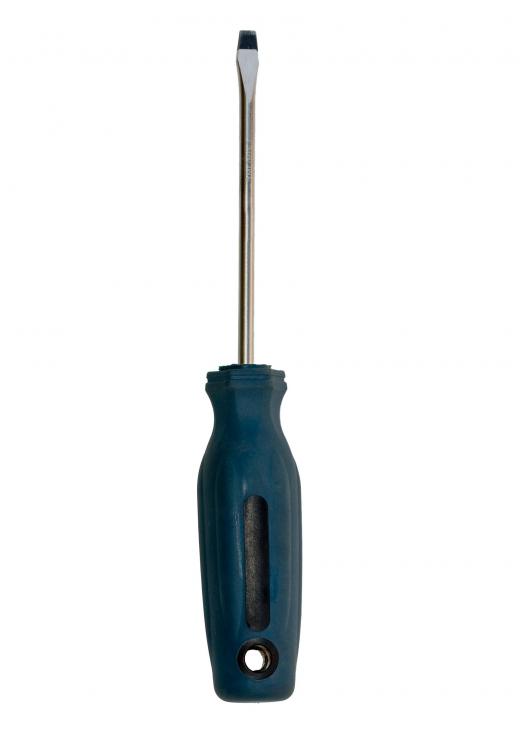A wood screw is used to join two pieces of wood together. Made of steel, the wood screw typically has a head that is designed to be used with a regular slotted or Phillips-head screwdriver. A simple method of identifying a wood screw from a metal screw is to look at the screw's shank. A wood screw will have a blank shank underneath the head and above the threaded area, whereas a metal screw will typically have fine threads running from the point of the screw all the way up to the head with no blank or smooth area at all. The materials used to manufacture the screw can be plain steel, brass, or aluminum—galvanized steel or adhesive-coated steel are other options.
The threads of this type of screw are intended to bite into the walls of a pre-drilled hole. The screw is not typically used to drill its own hole; however, some specialty-type screws are so intended. When attempting to force a wood screw into position without pre-drilling a pilot hole, the wood will usually crack, and the screw will typically not hold as well as a screw driven into a pilot hole. By using a pilot hole, the threads in the screw are able to bite without being impeded by wood chips in the hole.

One type of screw that performs flawlessly without a pilot hole is a drywall screw. Many times, the drywall screw will be mistaken for a wood screw, though they are not the same. The drywall screw is a very coarse threaded screw that is designed to be driven into wood without a pilot hole. This type of screw is not designed for structural strength, nor is it made to securely fasten two pieces of wood together. The drywall screw is more like a staple in that it fastens a covering onto a wood wall. By having threads running the full length of the screw, it cannot sufficiently tighten two pieces of wood together.

The blank shank of the wood screw allows the screw to spin freely inside of the outermost piece of wood and draw the inner piece tight against it by having the threaded end grip the wood and pull. The fully threaded drywall type screw has threads which will tighten inside of the outer piece of wood and will not allow the screw to spin freely while the end threads grip and pull the wood. This results in a screw that is very tight—however, the wood can remain apart.
